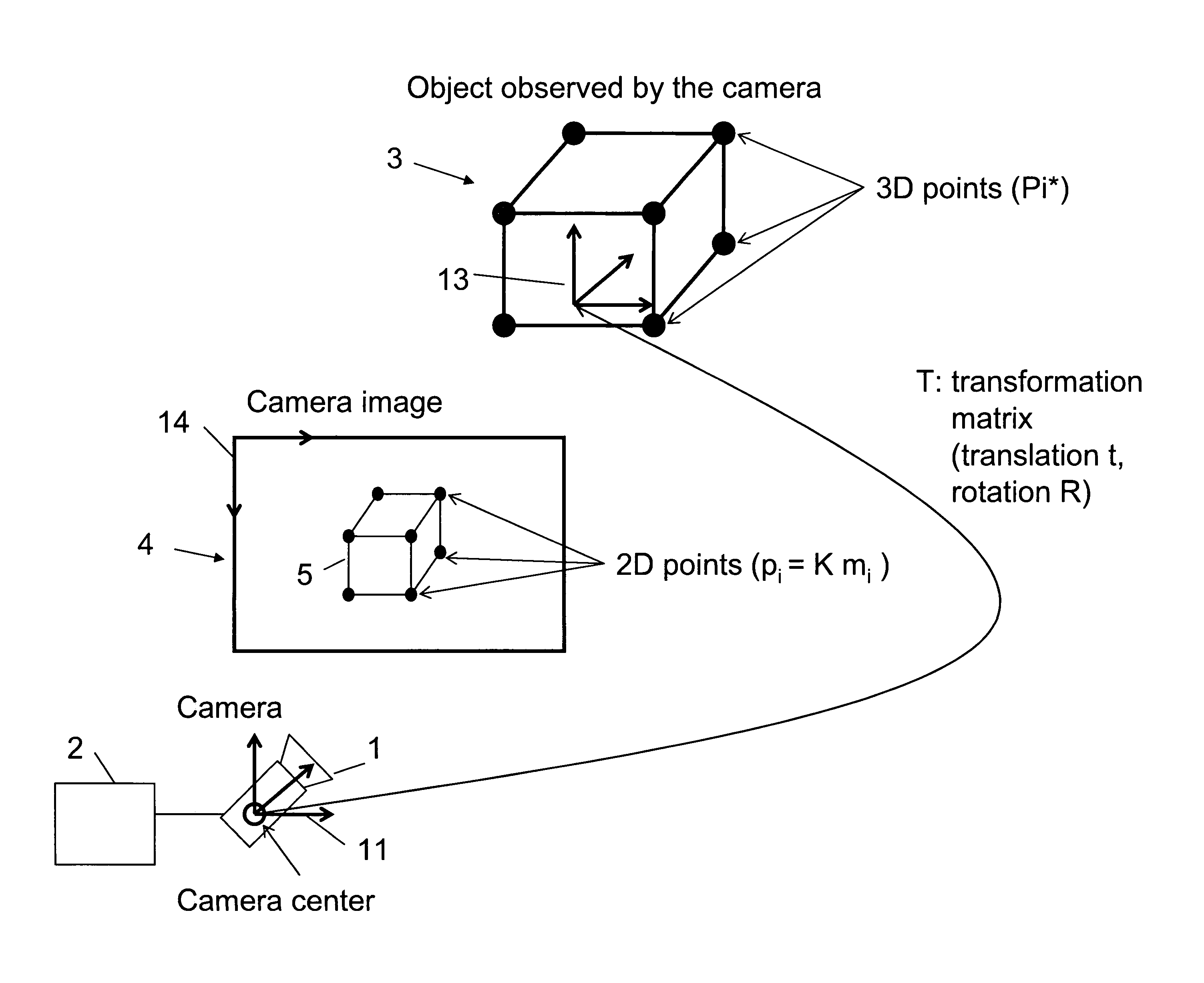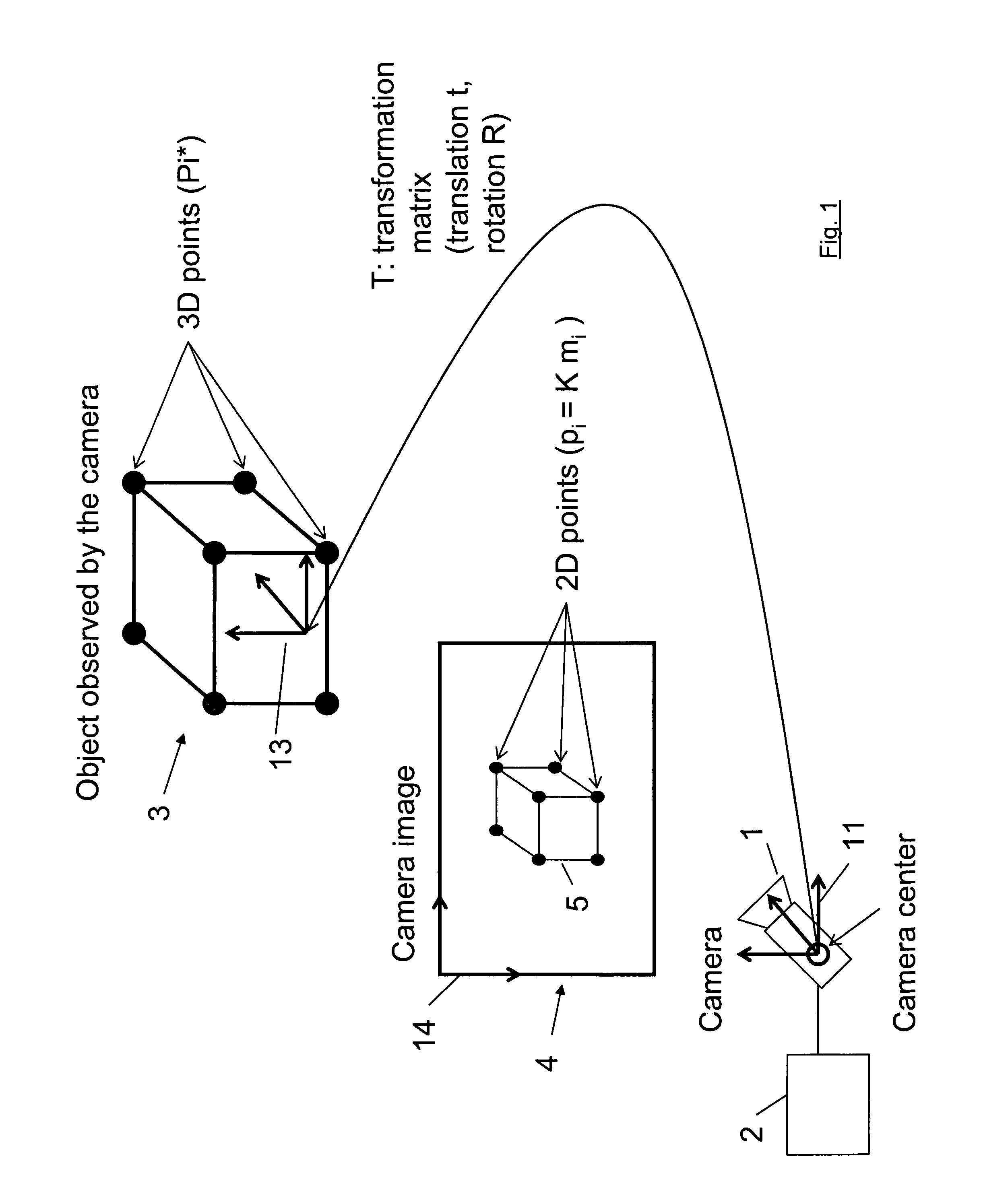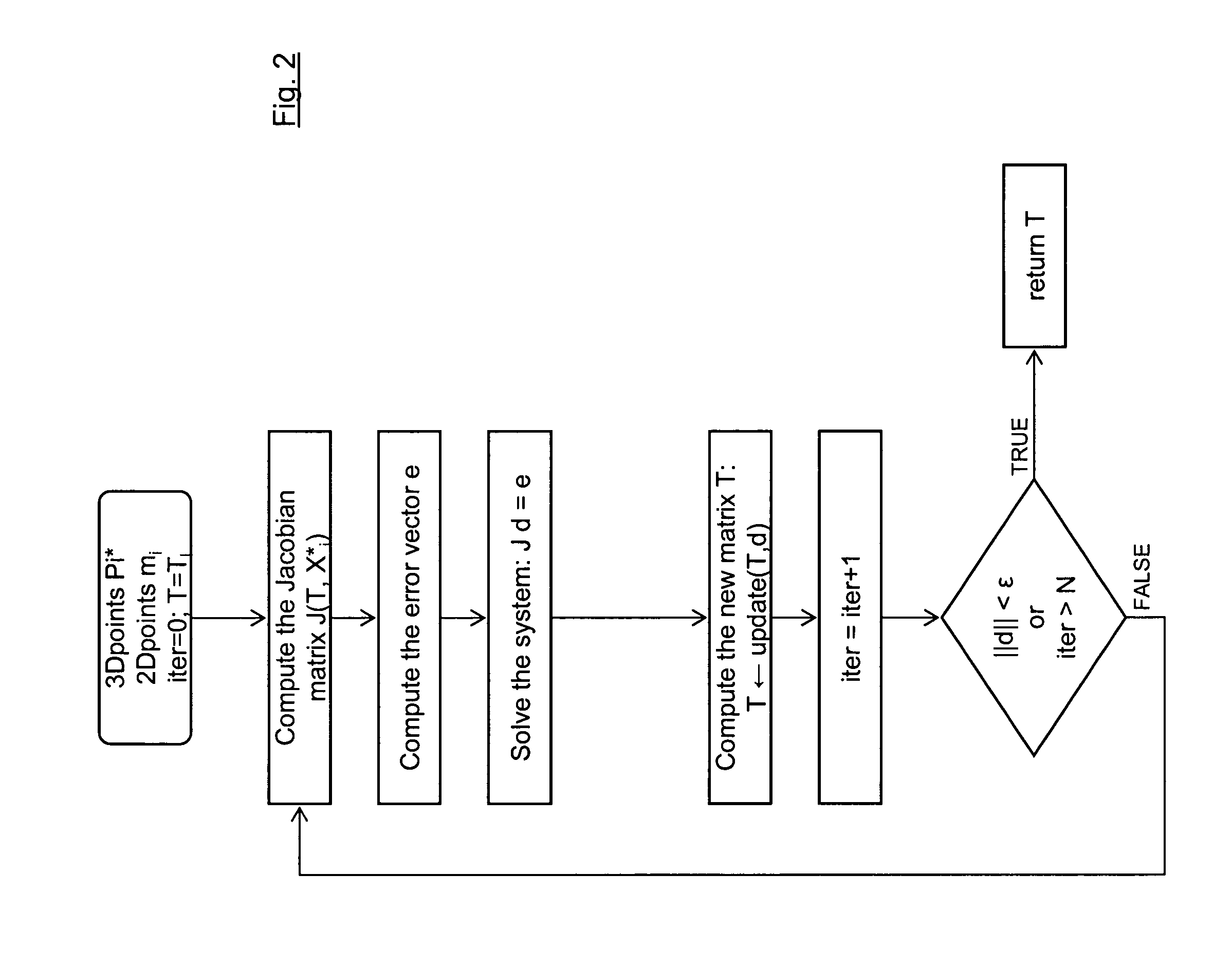Method for determining the pose of a camera with respect to at least one real object
a technology of real objects and camera poses, applied in the field of methods for determining the pose of cameras with respect to at least one real object, can solve the problem of heavy computational time and achieve the effect of low computational tim
- Summary
- Abstract
- Description
- Claims
- Application Information
AI Technical Summary
Benefits of technology
Problems solved by technology
Method used
Image
Examples
Embodiment Construction
[0034]FIG. 1 shows a schematic visualization of a scene comprising any kind of a real object 3 (in the present example in the form of a cube) comprising 3D points Pi* which is observed by a camera 1. The camera 1 is coupled with a data processing means 2, which may be any kind of computational processor which is appropriate for processing digital images provided by the camera 1. For example, the camera 1 and the processor 2 may be included in the same device, such as a mobile telephone or any other mobile device, or may be incorporated in respective distributed devices coupled in wired or wireless manner. The camera generates one or more camera images 4 displaying a 2-dimensional representation 5 of the real object 3 having 2D points pi. The representation of the object in the image is not restricted to the appearance of the object as a photometric response to the light of the visible spectrum reflected from the object (which corresponds to the standard image acquired by standard co...
PUM
 Login to View More
Login to View More Abstract
Description
Claims
Application Information
 Login to View More
Login to View More - R&D
- Intellectual Property
- Life Sciences
- Materials
- Tech Scout
- Unparalleled Data Quality
- Higher Quality Content
- 60% Fewer Hallucinations
Browse by: Latest US Patents, China's latest patents, Technical Efficacy Thesaurus, Application Domain, Technology Topic, Popular Technical Reports.
© 2025 PatSnap. All rights reserved.Legal|Privacy policy|Modern Slavery Act Transparency Statement|Sitemap|About US| Contact US: help@patsnap.com



